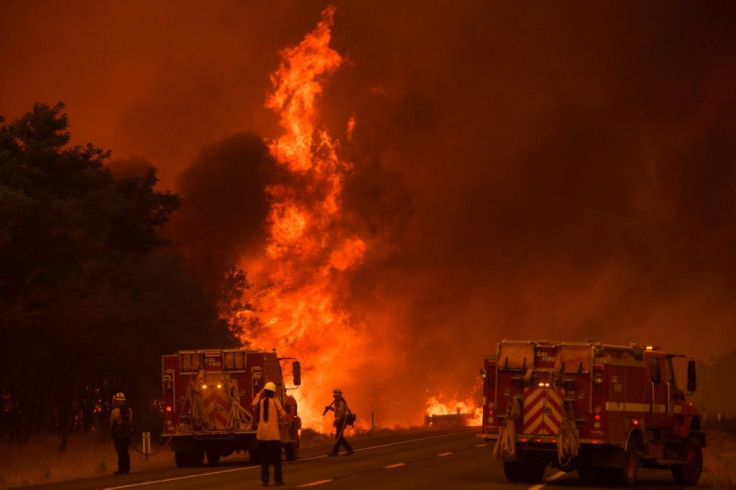Aggressive Caldor Fire Edges Toward Tahoe Basin: Extreme Heat Forecast, Evacuations Ordered
KEY POINTS
- Fire officials shifted the fire containment date to September 8
- The Caldor fire has only been contained 19%
- California’s temperature has risen by 2 degrees Fahrenheit since the early 20th century
The two-week-old Caldor fire has become “more aggressive than anticipated” and prompted an evacuation order around the Tahoe Basin as the blaze edged towards lake Tahoe.
“To put it in perspective, we’ve been seeing about a half-mile of movement on the fire’s perimeter each day for the last couple of weeks, and today, this has already moved at 2.5 miles (4 kilometers) on us, with no sign that it’s starting to slow down,” said Cal Fire Division Chief Eric Schwab to Associated Press.
The fire started on August 14 and has already burned an area of 245 square miles and has destroyed more than 600 structures. Firefighters have now pushed the fire containment date from earlier this week to September 8, AP reported. However, the projected date could change if the fire rages on.
For the next few days, temperatures are expected to rise to the triple-digits. Across the Northern Sierra, a red flag warning for critical weather conditions was issued for Monday and Tuesday. Those conditions include low relative humidity, strong winds, dry fuels and/or the possibility of dry lightning strikes, reported CNN. The Caldor fire has been contained 19%.
“It is going to be the hottest day so far since the fire began, and unfortunately, probably the driest," Caldor Fire spokesman Isaac Lake was quoted by The Hill.
Labor Day holiday tourists vacationing in the area left after plumes of fire in the surrounding mountain and smoke-shrouded the pristine view of the lake and filled the air with unhealthy gases and ashes.
"With extreme fire conditions and unsettled weather in the area, residents and communities are reminded to listen to local authorities and be prepared to evacuate," stated the California Governor's Office of Emergency Services on Twitter.
Widespread evacuation warnings and orders are in effect in El Dorado County due to the #CaldorFire. With extreme fire conditions and unsettled weather in the area, residents and communities are reminded to listen to local authorities and be prepared to evacuate. pic.twitter.com/d0MiWC3MLa
— California Governor's Office of Emergency Services (@Cal_OES) August 26, 2021
A section of Interstate 15 in Southern California was closed off Sunday after winds pushed a new blaze, now called the Railroad Fire across lanes in the Cajon Pass northeast of Los Angeles.
The second-largest fire in California’s history, Dixie is about 65 miles north of the Caldor fire and has only been contained by 48%. The Dixie fire has burned almost 1,300 buildings since it began in July.
California is experiencing more than a dozen large fires and over 15,200 firefighters are at the scene trying to control the blazes, reported AP News. So far, the fires have destroyed around 2000 structures and led to evacuation of thousands. The fires in California are among 90 large blazes ravaging several states in the U.S.
The Department of Defense will be sending 200 U.S. Army soldiers and equipment including eight U.S. Air Force C-130 aircraft. The aircraft has been converted into air tankers capable of dumping thousands of gallons of water to help firefighters in Northern California.
In recent decades the climate in the U.S. West has warmed considerably triggering extreme heat and drought. The temperature in California has risen by 2 degrees Fahrenheit compared to the early 20th century, which is exacerbating the severity of wildfires in the region.

© Copyright IBTimes 2024. All rights reserved.





















